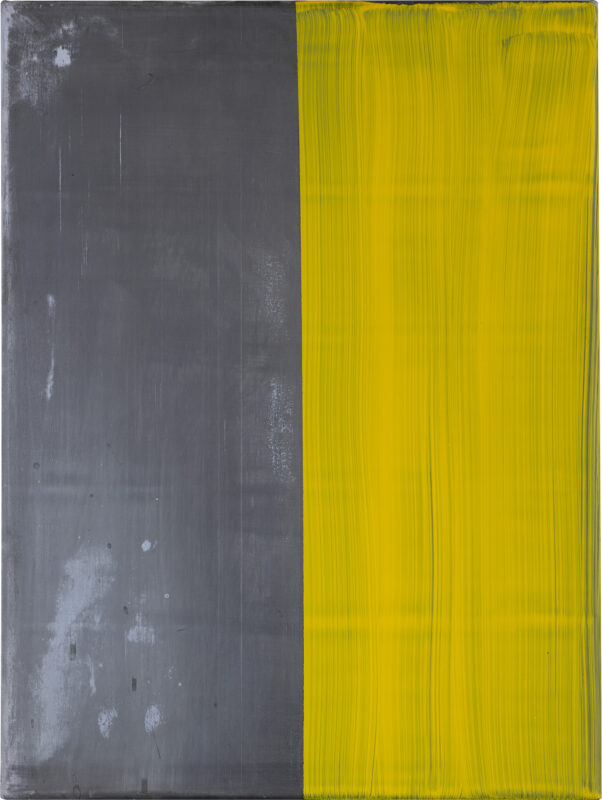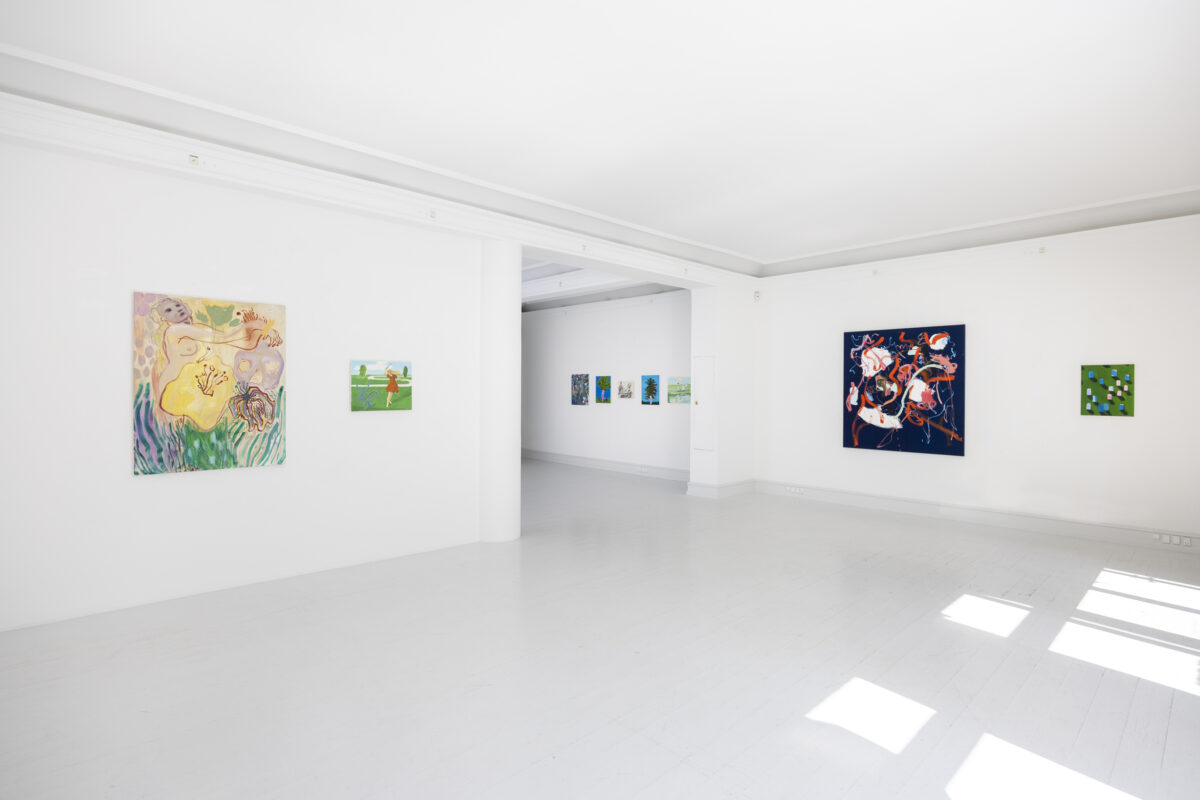
“Floating Bodies,” a group exhibition around the body and painting at Copenhagen’s Galerie Mikael Andersen, closes this week. August 19th concludes this summer-long debut in the Danish capitol by five distinct American painters: Jackie Gendel, Jane Corrigan, Amy Bessone, Ammon Rost, and Becky Kolsrud. Curated by internationally regarded collector, author, and connector Jens-Peter Brask, the show culls aesthetics from both of America’s cosmopolitan coasts — ranging from abstraction to outright figuration of richly varying surreal bents, altogether somewhat in homage to art’s fixation on the physical form as of late. Meet the artists who’ve been taking on that moment.
Jackie Gendel
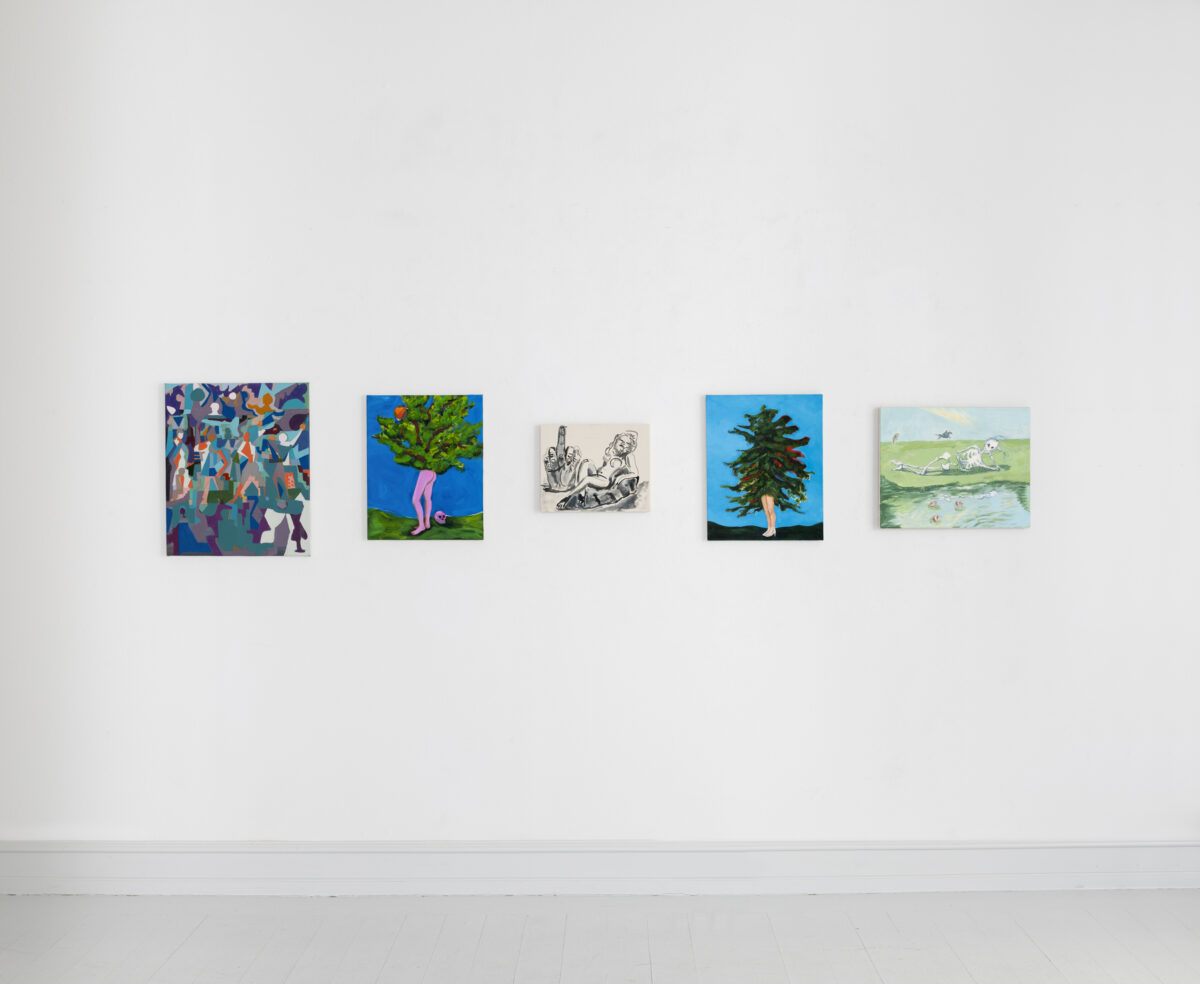
Jackie Gendel (b. 1973, Houston, TX) may have previously worked out of Brooklyn, but she currently lives, paints, and teaches in Providence, RI. At least since earning her Yale MFA in 1998, Gendel’s translated art history’s major movements through female subjects, deconstructing the physical dimensions of form and time — uncovering new and luscious routes to narrative staging in the process. She contributed paintings from two different bodies for this show, then wondered aloud “Let’s see if this ‘floats.'” She has a solo with Philip Martin Gallery in Los Angeles next Spring.
FAD: What does the title of this exhibition mean to you?
JG: I wasn’t thinking of it as a horror trope nor was I thinking of it in an ecstasy driven sci-fi way, or as an aberration in the eye, though it could be all those things. I can see the idea of the fluid body as something that aligns with my subject as a painter, the making fluid of old schemas like figure and ground or architecture and figure, inside and out, or the movement in crowds.
FAD: Why have you focused on depicting women over the course of your career? Has your feeling about the subject matter shifted with time?
JG: Yes I originally saw it as a persona of continual becoming, characters shifted gender in my work as much as they shifted their place and their story. I am not an essentialist. To the second question, of course.
FAD: Have you discovered any forgotten elements of the body while deconstructing it?
JG: The bodies in my paintings don’t really have organs. 😉
Jane Corrigan

Jane Corrigan (b. 1980, Shawville, Canada) lives and works in New York. Her oil paintings on canvas have shifted somewhat in subject matter over the years, but a focus on the body as persistent plot device where a steady flow of energy plays out pervades most of her practice. Corrigan’s an historic favorite amongst critics, and her work is in the collection of Florida’s Tampa Museum of Art. She’s currently painting her forthcoming solo show with Montréal-based Pangée later this Fall.
FAD: How did you choose which paintings to contribute to “Floating Bodies”?
JC: When I’m deciding what to paint I go through sketchbooks and select a drawing to develop further into a painting. So for Floating Bodies, I chose a drawing of a skeleton resting beside a pool of water, staring at her reflection, like narcissus. Her reflection in the water spoke to the show’s theme.
FAD: How would you say your style and approach has evolved over the course of your career?
JC: In the past I tended to work directly onto canvas without referencing preliminary drawings. These days I spend more time in the drawing stage, sketching out many versions of an idea and fine tuning before beginning a painting. I think this change in approach has impacted the work, but it’s so hard to say.
FAD: What’s the most important or interesting element of rendering the physical form in paint?
JC: For me the most fun and challenging aspect of rendering a body in paint is working out how to tell a story through body language — hand gestures, facial expressions, that kind of thing. My mind works narratively and I enjoying working all of this out as I go.
Amy Bessone
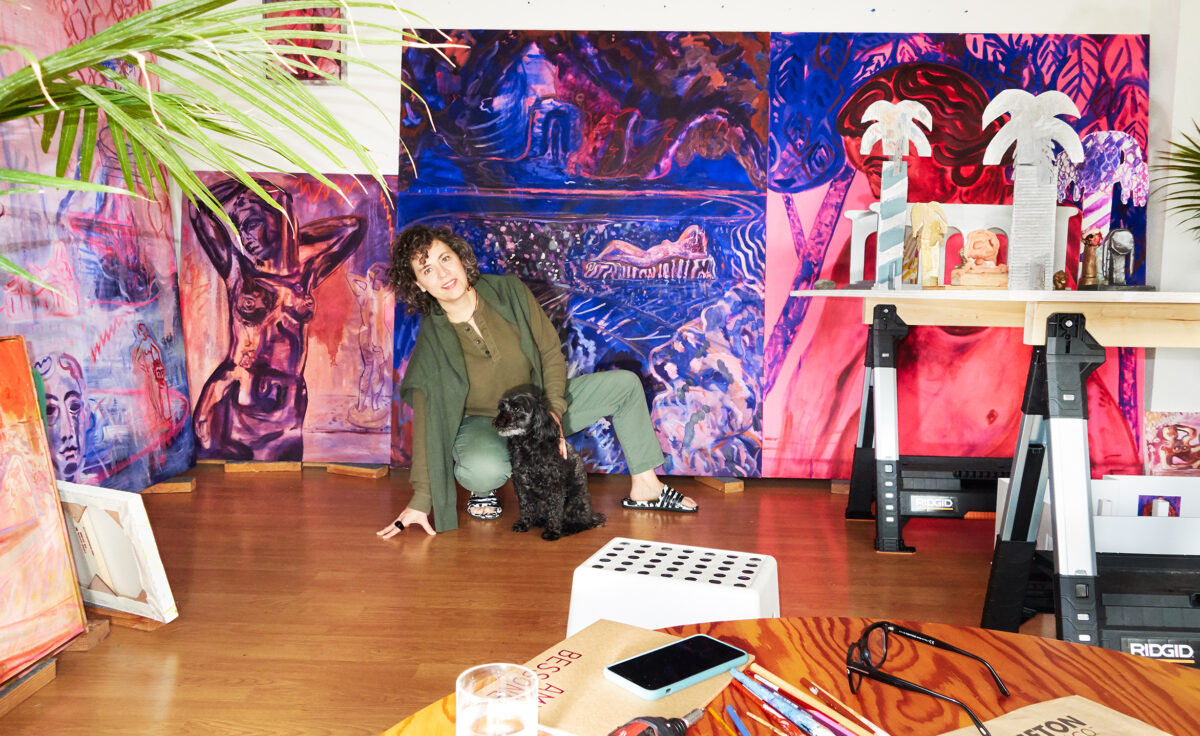
Maximalist artist Amy Bessone (b. 1970) paints and sculpts out of Los Angeles. “Floating Bodies” aligned with existing facets of her practice — she has a longstanding fascination with Japanese Ukiyo-e prints of the 17th – 19th century. The name for these sumptous scenes translates to “pictures of the floating world,” echoed in her artworks’ dreamlike sensuality shown here. She’s laser focused on ceramics lately, particularly the tenuous process and faith required for glazing.
FAD: How do you relate to the body, yours or otherwise, while painting?
AB: The body is everything: means, subject, content, author, audience, etc. I make everything by hand, I work in natural daylight, and I create physical objects, intended to be experienced in person. As much as we might like to deny or ignore it, sensory systems are at the fore of every human experience, and painting holds a special territory where sensory systems can meet, that of the maker and the audience.
FAD: Have you witnessed art world attitudes towards figuration shift over your career? How do you relate to those attitudes — do you take outside trends into consideration at all?
When you say “figuration,” I am wondering if you mean specifically figurative painting or depictions of the body in general?
When I was an art student in New York and Europe in the very late 80s and early 90s [at De Ateliers in Amsterdam, Parsons Paris School of Art and Design in Paris, and Barnard College in New York], painting, particularly figurative painting, was uncool if you had any kind of self-awareness about where you were in history. Painting had been declared dead multiple times; nonetheless, I could never look away from it.
As a young painter, I felt compelled to keep the material qualities of the paint subservient to the conceptual framework. Over time, I became more unabashed about the material handling and embraced my painterliness more.
I’m not particularly hung up on the distinction between figuration and abstraction in painting. I’m interested in painting regardless. I also get a lot out of looking at representations of the body in other media: photography, sculpture, video, film, pop culture, etc.
I do pay attention to what’s going on around me, and see quite a few “painting” shows. Right now the biggest threat to painting is the unbridled proliferation of underbaked things that are presented as paintings, probably fueled by student debt, the cost of living, and financial speculation. I crave paintings with depth and longevity. The fast-fashion approach to art has more downsides than up, from the existential to the environmental, and every other angle I can think of right now.
So, yes, I do look at what’s going on around me, I think about it, and some response to it may be in my work, but I’m also a lover of art history, which provides the perspective of time — decades, centuries, dialogues across millennia!
Ammon Rost

Ammon Rost (b. 1980 in Tokyo, Japan) lives and works in Los Angeles and New York. The abstract, gestural expressionist — who expertly imbues his forms with enough energy to evoke the faint border of figuration — studied under titans in his field like Catherine Opie while earning his BFA in Art from UCLA during the early aughts. He’s since been featured in Office Magazine, complimented the walls of prestigious collectors’ minimalist homes, and exhibited his canvases around the globe.
FAD: How did you choose which works to contribute to the show?
AR: For this show I included some recent works made after visiting Japan. My mother is Japanese, and having been born and raised in Tokyo, I have a real connection to this place. When I got back I was making paintings about my memory of the trip, I like to call it spiritual journaling. I scan my memory for scenes that hold sweetness.
FAD: How long have you worked in abstraction? What attracts you to this manner of painting?
AR: When I was an undergrad at UCLA, my paintings were more representational, there was a surrealism thing going. I found myself interested in breaking down the picture further and further into abstraction. Abstract imagery is all around us, in the deep green moss dressing boulders, the white curves of breaking waves, fluorescent yellow dust of a tennis ball when it’s pulverized by a racket. The visual language of the abstract is in our daily experiences. That’s what we subconsciously react to when seeing an abstract work.
FAD: What directions do you think you’ll explore next with painting?
AR: The more I paint the more complex my abstract visual language becomes. I see it as a cataloging process of symbols and gestures that make up the human experience.
Becky Kolsrud
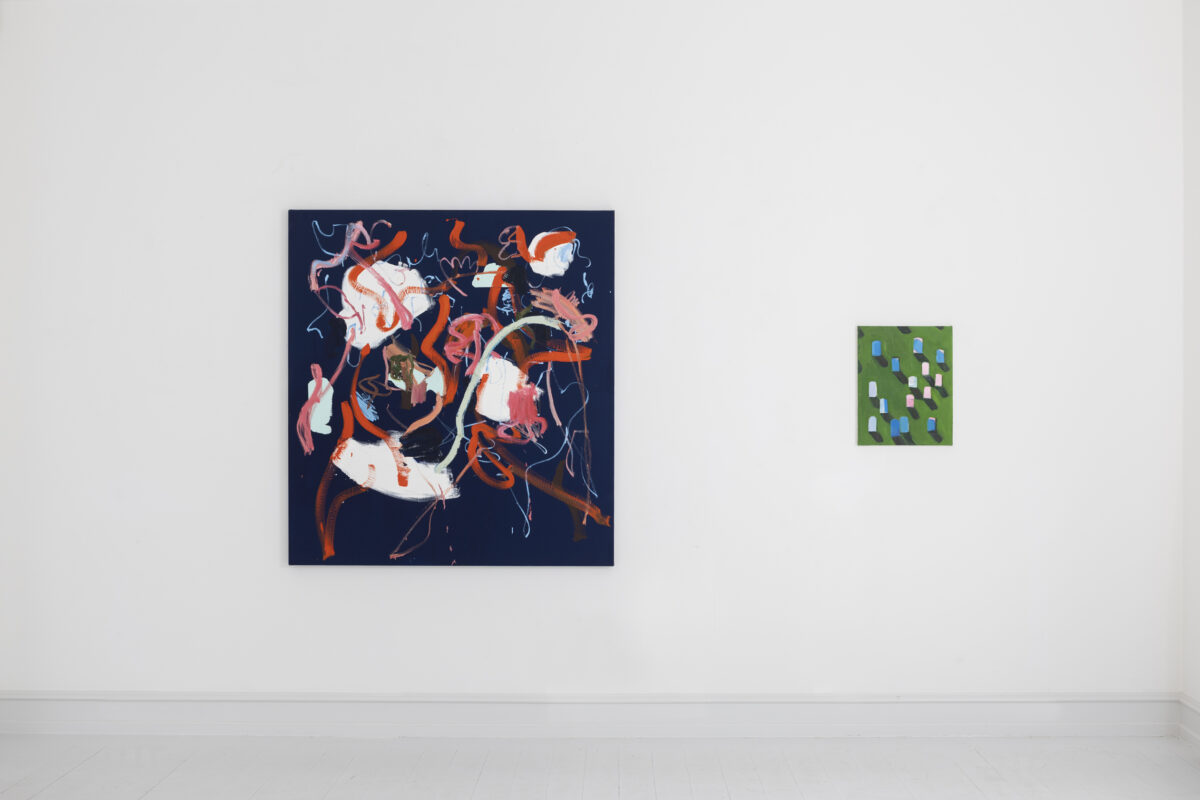
Los Angeles-based Becky Kolsrud (b. 1984) seems to be hitting a stride in a big way. Since earning her BA in Studio Art from NYU in 2006 and her MFA from UCLA in 2012, she’s shown with numerous acclaimed galleries like Karma. She’s been a hit with the news, too, from features on her 2021 solo show “Elegies” at JTT to recent mentions of her forays in the vanitas tradition. She met Brask years ago over their affinity for skulls, and is currently at work on a book of her collages.
FAD: What is your level of exchange with the forms that you paint? Do you influence them, or do they influence you?
The paintings are not pre-planned, I like to work on many at the same time and let the images emerge in their own time. I have been using some of the same themes and symbols for a while, but new ones always arise. This show includes paintings of graves and sheets on a line, which are both new motifs for me.
FAD: Do you notice differing attitudes towards the body between America’s East and West coasts? If so, do they translate through art?
I don’t see any difference in East or West coast American artists. I grew up here in Los Angeles, but the art scene here has a ton of New Yorkers. I’m more curious about American artists who live in the middle of nowhere.
FAD: Do you think your artworks change context at all when presented in a new international city like Copenhagen?
Yes, there is potential for the meaning to be received differently when the context changes. The place, the architecture, the other art in the show, as well as the historical context. I am of partial Scandinavian descent, my father’s family immigrated from Norway more than a century ago. And so I am particularly curious how my work might be received in Denmark.

